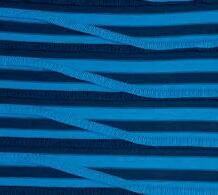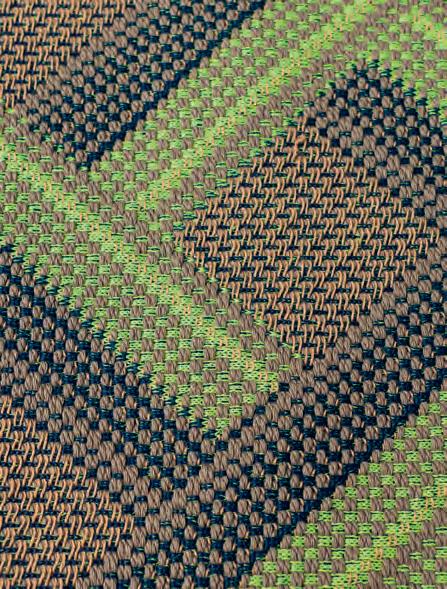Color in Knitting:

















 Anna Gitelson-Kahn
Jörg Hartmann
Anna Gitelson-Kahn
Jörg Hartmann


















 Anna Gitelson-Kahn
Jörg Hartmann
Anna Gitelson-Kahn
Jörg Hartmann
knit (front) stitch front and rear needles knit (rear) stitch weft yarn front-rear stitch (full rib)
to rear transfer front tuck oat rear tuck rear to front transfer front needle cast-o rear needle cast-o knit (front) stitch front and rear needles knit (rear) stitch weft yarn front-rear stitch (full rib) front to rear transfer front tuck oat rear tuck rear to front transfer front needle cast-o rear cast-o knit (front) stitch front and rear needles knit (rear) stitch weft yarn front-rear stitch (full rib) front to rear transfer front tuck oat rear tuck rear to front transfer front cast-o knit (front) stitch front and rear needles knit (rear) stitch weft yarn front-rear stitch (full rib) front to rear transfer front tuck oat rear tuck rear to transfer knit (front) stitch front and rear needles knit (rear) stitch weft yarn front-rear stitch (full rib) front transfer front tuck oat rear tuck knit (front) stitch front and rear needles knit (rear) stitch weft yarn front-rear stitch (full rib) front tuck oat rear tuck
Every knitted fabric is made of yarn; every yarn has a color, even an undyed one. Yet, our perception of the color of a knitted fabric is heavily influenced by the knitting structure as well as by the yarn’s characteristics.
This book’s journey begins when two yarns of different colors come together to create a knit (polychromatic knitting). In Color in Knitting: By Designers, for Designers,
we focus on methods of constructing multicolor knits, including knitting structures, techniques, and technologies. Other color-related finishes, like dyeing, printing, or embroidery, we chose to not discuss to keep our focus narrow.
In the first section of this book, we have selected samples from past decades that we believe best illustrate the different methods of multicolor knitting and the resulting color effects. The photographs of samples emphasize the appearance of the color and texture, rather than the shape of the sample. Some samples also include the reverse side to show how techniques impact both sides of the fabric. All knitting structures and techniques depicted apply to all types of apparel fabric or technical textiles, such as automotive or furniture upholstery, shoe uppers, medical applications, or architecture.
Next to the samples, you will find keywords that represent the specific structures and techniques used in the creation process. These keywords can help you navigate between the samples and the technical chapters. Additionally, each sample is accompanied by a Stoll Patternshop code, so you can find it online (https://patternshop.stoll.com) to learn more details about it, including shape construction, machine gauge, knitting time, and yarns. From there, you can download high-resolution copyright-free photos as well as knitting programs. The samples are intended to inspire further developments as well as to be used directly as they are.
The second part consists of technical chapters that provide insight into the specific structures and techniques used to create the samples previously presented. Our goal in this section is to provide you with a technical foundation, so you may further explore and manipulate the described structures and techniques to achieve your own goals when combining colors in knitting.
This part includes stitch notations (diagrams) written using basic knitting symbols to further illustrate the construction of a knit. Diagrams consist of technical rows; each one equivalent to one single knitting system action, such as the passage of a yarn in a stitch formation or additionally required needle actions (e.g., transfers or stitch cast-off). Multiple technical rows might be needed to form one knitted row of a knitting structure. Diagrams are read from the bottom up, similar to the way knitting is formed on a machine. Symbols of stitch notations include front bed and rear bed needles, yarn, knit (front) stitch, purl (rear or back) stitch, front-rear stitch (full rib), float, front tuck, rear tuck, front to rear transfer, rear to front transfer, front needle cast-off, and rear needle cast-off.
To help you navigate these numerous samples, we compiled a matrix, found at the end of this book. It summarizes samples provided and connects them to the relevant technical chapters, allowing you to either start by looking at the samples and then exploring the technique behind them, or by starting with the technique and then finding the samples that employ it.
As we look to the future, it is clear that technological innovation is poised to bring even more excitement to the realm of multicolor knitting. Amidst constant evolution and advancement, the fundamental principles of knitting will remain unchanged. We believe that a thorough understanding of these principles can not only improve one’s own work but also inspire and
inform the development of new technology. How

















Stripes are the simplest way to combine colors in a knit. Stripes can be bold and graphic, subtle and suggestive, or active or quiet, depending on the color combination and stripe proportions. Single- or double-row striping provides a great base for small-scale textural grid patterns, such as Milano rib variations and optical illusion effects, when combined with a full or half cardigan, or linkslinks (aka garter stitch) structures. Great color effects can be achieved with single row striping combined with Stoll-ikat plating® and elongated stitches (see chapter 5.0, Elongated Stitch, for details). Interesting zig-zag and undulating lines can be created by combining stripes with pointelle or racking. Stripes can run the full width of a fabric or appear only in selected areas when combined with intarsia or partial knitting.
Possible on any machine.
Multiple yarn qualities, counts, and effect yarns can be combined.
Can be combined with any knitting technique and structure.
For smooth knitability, an even number of rows for stripes is recommended. In a striped pattern, a color that is not knitted stays at the side of the fabric until it is used again, resulting in a vertical float at the side. The height of the stripes determines how long these side floats will be. The number of colors in a stripe pattern determines the number of floats at the selvage of the fabric.



Plush, also known as pile, knitted terry, and fur knit, is a single-jersey knitting technique that involves two yarns knitted together: binding or base yarn (blue in the diagram below) and plush yarn (black). The binding yarn always forms a stitch. The plush yarn forms a stitch together with the binding yarn while plated behind it, and can create a loop extending outward (pile) at the purl side of the fabric. The pile loop is created by picking up stitches, with plush yarn only, on the empty needles of the opposing bed and casting them off. Pile can be created on either side of the fabric by alternating the needle arrangement between the beds, but not on both sides simultaneously. The resulting fabric is in relief and highly dimensional with combined raised (plush) and impressed (base) areas. Multiple plush yarns can be used together to create fuller, opulent pile or to alternate yarns of the plush with inverse plating techniques, such as Stollikat plating®, or to change the color or texture within plush areas, as shown in fig. 110050 and in fig. 181011 , of both binding and plush yarns.
Combinable with other ADF techniques such as Stoll-ikat plating® and Stollweave-in®, shown in fig. 181011
Can be applied to a full row of knitting as well as to a selected area, as in intarsia or partial knitting.


Requires a Stoll plush device and a specific machine setup.
Relief Jacquard

Precise Inverse Plating
Selective Plating
Stoll-weave-in®

















delves into the methods of constructing multicolor knits using knitting structures, techniques, and technologies. The book not only showcases the beauty of multicolor knitwear but also provides a solid foundation for readers to further explore and manipulate these methods for their own design work. The book begins with a color journey of fascinating patterns, designed and implemented by Stoll from both past decades and recent collections, which illustrate the different color effects of multicolor knitting. In the second part of the book, the authors provide insight into the specific structures and techniques used to create these patterns; the section also includes stitch diagrams written using basic knitting symbols to further elucidate the construction of a knit. ISBN

